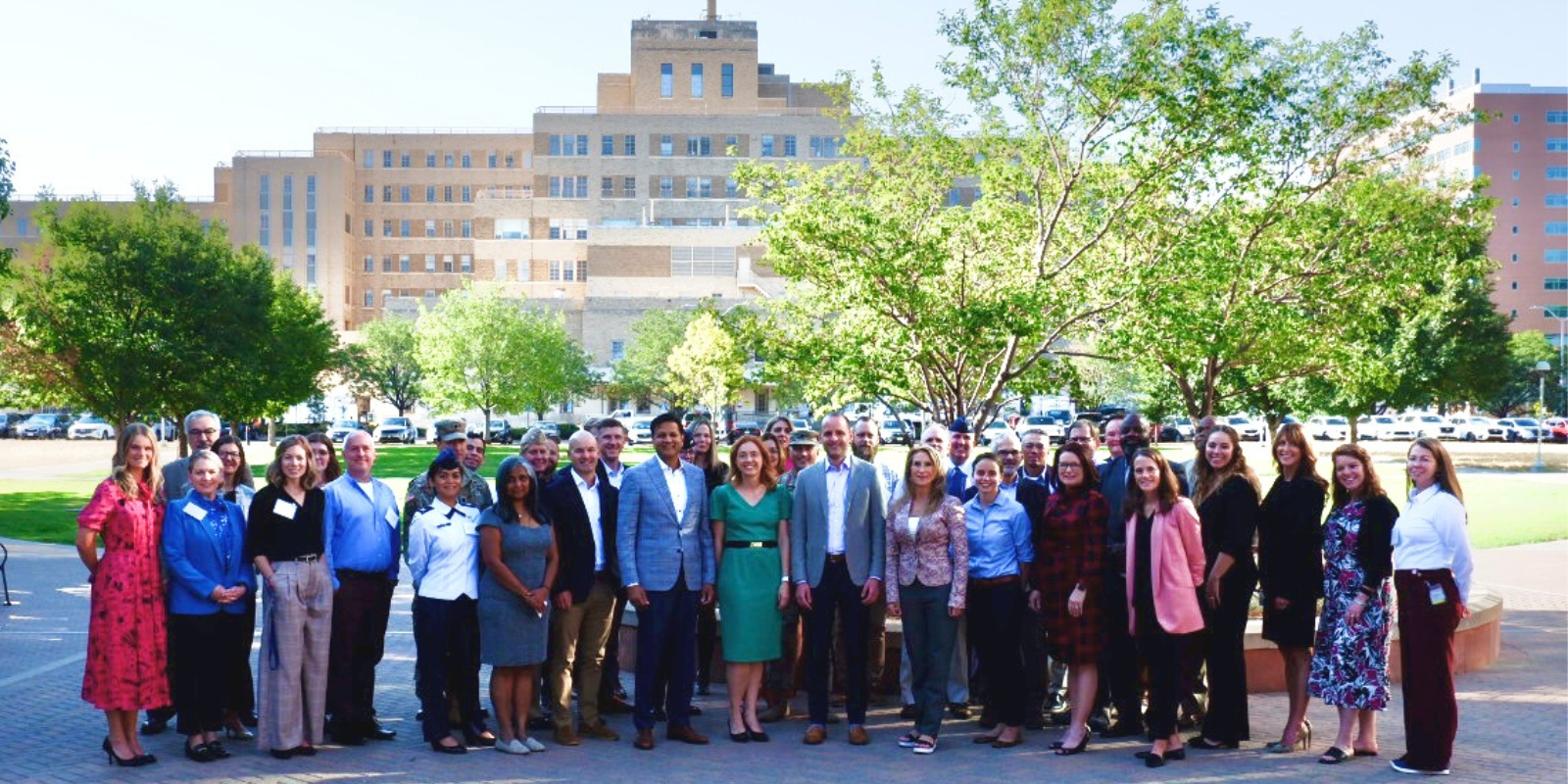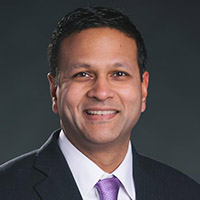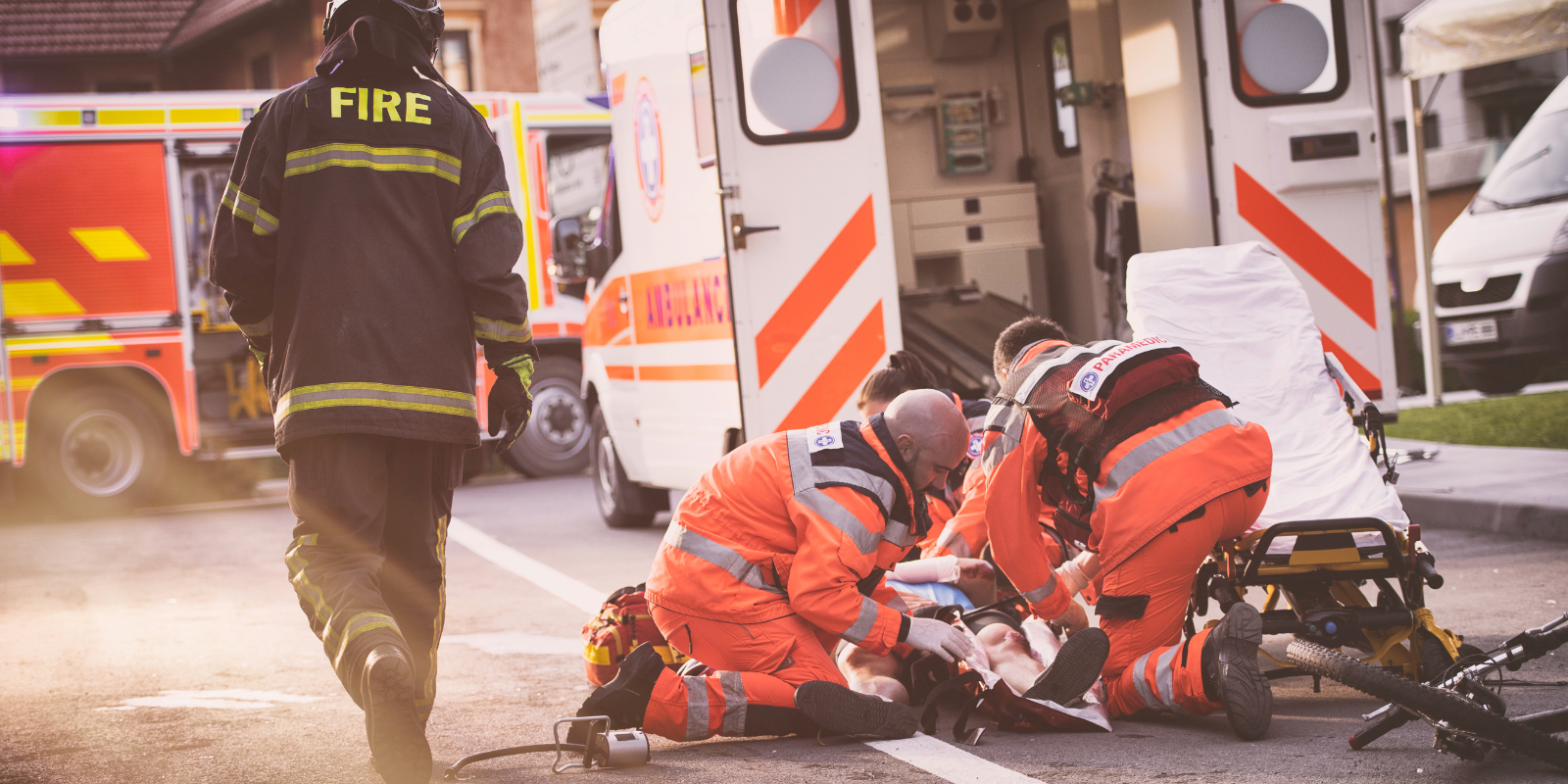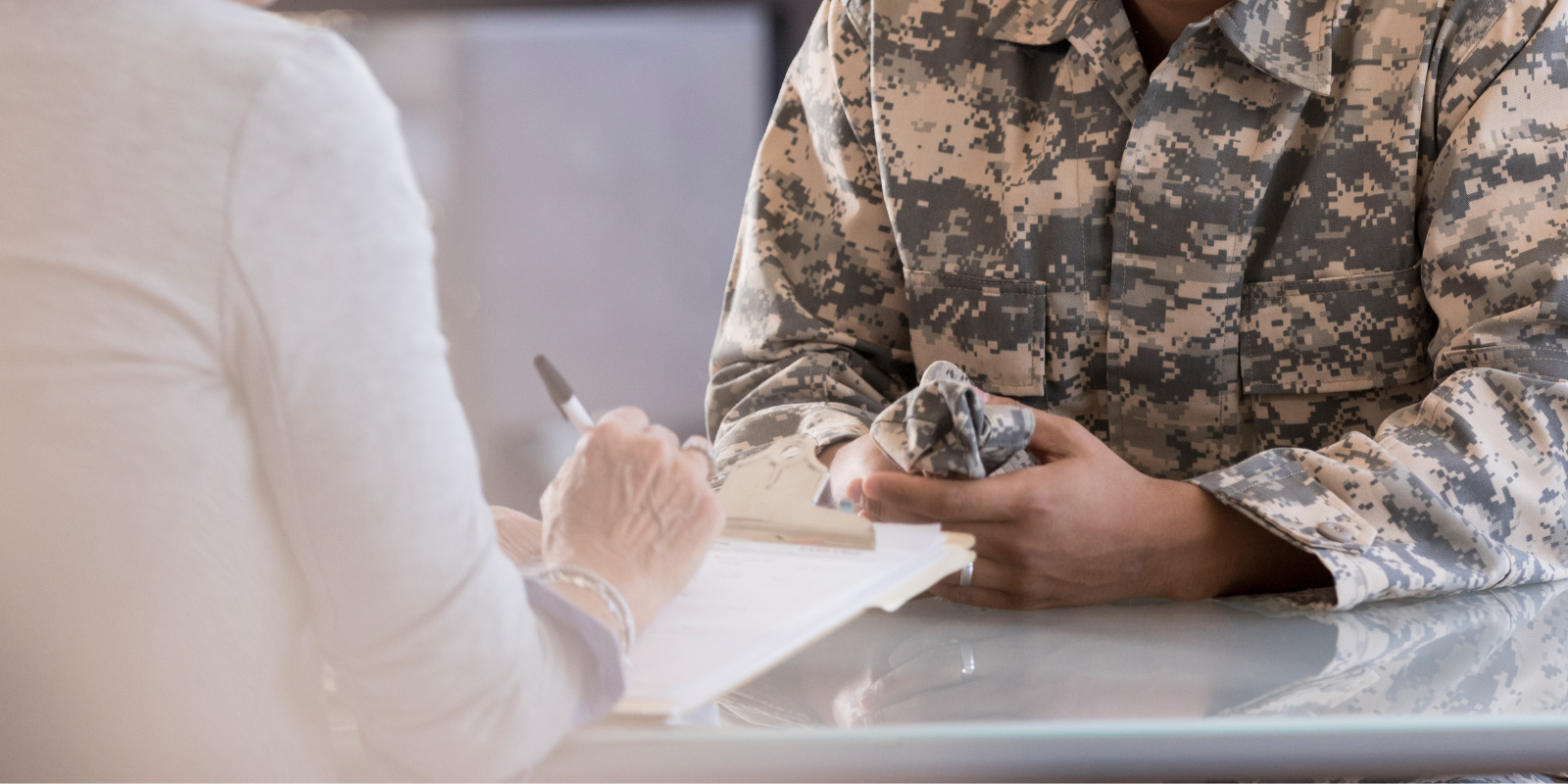A crucial part of addressing the crisis of suicide by firearm among military service members is creating a space for military and civilian stakeholders to have open dialogue and work together on impactful solutions.
That’s what organizers and attendees of the summit on Firearm Suicide Prevention in the U.S. Military say they’ve experienced during the meeting, which was hosted on the University of Colorado Anschutz Medical Campus this week by the CU Firearm Injury Prevention Initiative (FIPI) and CU Center for Combat Medicine and Battlefield (COMBAT) Research.
Attendees included representatives from across the U.S. Department of Defense (DOD), including suicide prevention leaders from the Army, Marine Corps, Navy, Air Force, Space Force, and National Guard, as well as the Defense Suicide Prevention Office (DSPO) and DOD funding agencies. They were joined by researchers from institutions across the U.S.

Vik Bebarta, MD, and Emmy Betz, MD, MPH, left pose for a photo with attendees of the summit.
“Today we wrestle with and tackle some tough challenges together. We’re a gathering place for experts,” said Vik Bebarta, MD, director of the Center for COMBAT Research and a professor of emergency medicine in the CU School of Medicine. “Our takeaways are not just discussions, but papers, policies, and practice guidelines. We’re doing things that move the needle at this summit. This is a very powerful group to be a part of.”
Last month, researchers from FIPI were awarded the MHSRS Outstanding Research Accomplishment Team Award for the initiative’s dedication to collaboratively using evidence-based approaches in finding solutions to prevent firearm injuries and deaths, with a specific focus on suicide in the military.
“These opportunities to bring together diverse perspectives excite me and allow our group to find solutions and creative ways to move forward with common goals,” said Emmy Betz, MD, MPH, founding director of FIPI and a professor of emergency medicine.
At this year’s national summit, organizers focused on engaging military families in firearm suicide prevention efforts, with a goal of decreasing risk among service members and their families. They also revisited 10 recommendations that emerged from the first year of the summit and spent time on new research, policy, and educational avenues.
Investigating the family connection
In 2022, the DOD reported 492 service members and 168 military family members — spouses and dependents — died by suicide. Researchers at CU Anschutz and across the nation have been examining how family relationships and dynamics might be strengthened or leveraged to help prevent suicides.
Ian Stanley, PhD, a summit organizer and psychological health lead for the Center for COMBAT Research and military and veteran lead for FIPI, presented findings on his team’s analysis that found military-connected youth who have reported suicidal ideation and suicide plans are less likely to report carrying firearms than their civilian peers.
“This (research) suggests there might be a greater exposure to important prevention programming in youth with a parent in the military,” he explained.

Ian Stanley, PhD
Other researchers at the summit shared research specifically on storage practices and how family dynamics can play an important role.
Jennifer Paruk, PhD, MPH, a postdoctoral fellow at the New Jersey Gun Violence Research Center at Rutgers University, and her colleagues found in a recently published study that 69% of parents surveyed discuss firearm safety with their children.
Nearly 40% of respondents said they kept their children from knowing that there are firearms in the home and 10% reported that their children were aware of firearms in the household, but do not have discussions about them. While not specific to the military, the data may help to inform future work.
In another Rutgers study, researchers found that firearm owners who have children in the home are less likely to endorse staging firearms in a manner to ensure ready access.
Michael Anetis, PhD, executive director of the New Jersey Gun Violence Research Center, said these findings and others done over the years continue to show that engaging firearm owners on the idea of responsibility to protect others may be an effective method to achieve safe storage.
Highlighting resources
Evolving family dynamics and effectively reaching a new generation of service members have been a focus for the DOD and its partners.
At the summit, DOD suicide prevention program managers and DSPO leaders spoke on a panel about their efforts and the next steps they hope to achieve in preventing suicides among service members.
Ramya Sundararaman, MD, MPH, deputy director of DSPO, discussed high-level strategies and priorities for military suicide prevention, including a focus on programmatic efforts to increase secure firearm storage practices.

Suicide prevention managers and DSPO leaders discuss ongoing efforts and progress at the summit.
Renee Johnson, the Ready and Resilient Integration Program Manager for the Department of the Army, shared new ways the branch is attempting to reach a new generation of service members, including videos that translate important mental health messaging into lexicon that is easily understood by younger officers, squad leaders, and soldiers.
Jena Moore, program manager for the Military and Family Life Counseling Program in the Office of Deputy Assistant Secretary of Defense, discussed non-medical counseling that benefits military members and their families.
“We’re meeting service members where they are, where their needs are,” said Moore, who pointed to new efforts to embed at military installations and providing resiliency resources on-the-go in the form of a mobile app.
Identifying progress and moving forward
Following the first year of the summit, researchers compiled 10 recommendations, which range from repealing a prohibition on asking service members about personal firearms to broad culture change and developing creative partnerships. The list now serves as an important road map for preventing firearm suicide and injuries.
Several summit attendees highlighted during this week’s meeting that having more voices at the table is a clear measure of success since the original gathering.
“We’ve seen how much the conversation has changed in the last two years,” said Bebarta, who is also a colonel in the U.S. Air Force Reserve in the Office of the Chief Scientist. “Today, we are talking about how we apply those conversations. That’s remarkable.”

Emmy Betz, MD, MPH
Now, researchers can point to programs such as Pause to Protect, a voluntary program developed by FIPI members and funded by the DOD that engages firearm businesses and owners to take easy steps to help prevent accidents, theft, suicide, and other violence involving personally owned firearms.
Moving forward, researchers say they want to dive deeper into topics that will serve to protect service members and their families. Among the highlighted priorities attendees touched on are: Continuing to investigate the most valuable types of locking devices, focusing on women service members, identifying more risk factors within families, and sharing more data across branches and research teams.
“Firearm suicide remains a big and challenging problem in civilian and military communities” Betz said. “But these kinds of creative collaboration bring hope and opportunities for a brighter future.”






